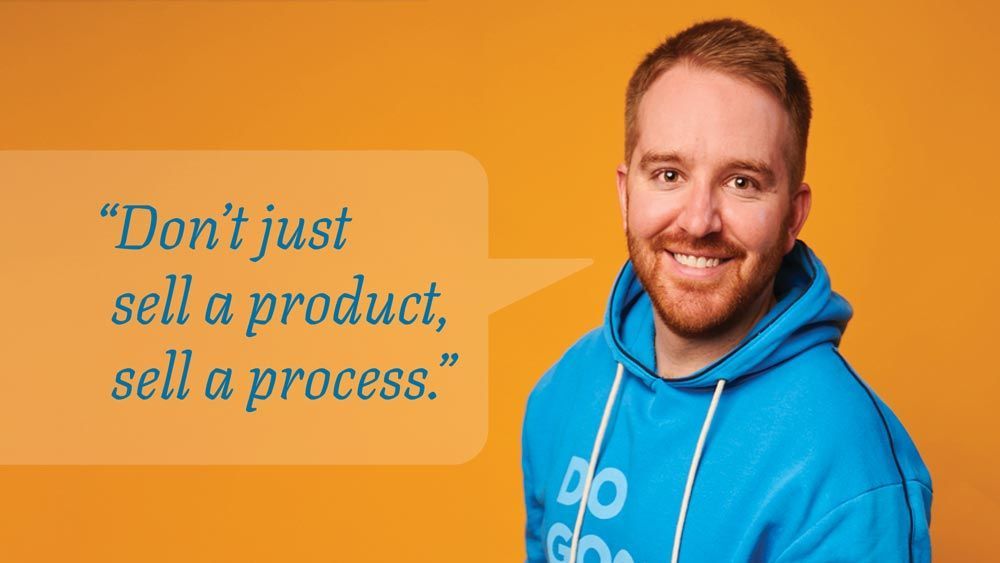Three Qualities of Believable Brands
Everybody brands.
When we say, “everybody brands,” — I’m not referring to the frenetic activity around logos, color palettes, or the visual expression of an organization – I’m referring to what any individual thinks about your organization when they interact with its people, service, product, or customer experience.
First, let’s define the catch-all word, brand. Your logo, colors, type choices are not your brand; they are a symbolic representation of it.
A brand is the story (or according to Seth Godin, the lie) people tell themselves about your organization, product, or service in the context of their worldview (i.e., what they individually believe about the world and their purpose in it).
In other words, a brand isn’t what you think, it’s what your customers think.
People tell themselves what they do or don’t believe. With every interaction, they decide if your brand is trustworthy, and assess if what they perceive is believable.
- If people are saying things that are true about your brand, then people will think and believe those things are true and that your brand is believable.
- If people say things that are not true about your brand — if people lie about your brand, and you can’t do anything to change their minds — then eventually, people will think the lies are true.
- Even though what you say about your brand is true, it’s only true in the consumer’s mind if — and only if — they believe it to be true.
For the consumer, brand perception is reality.
Understanding how a story works toward making your brand and organization’s personality more believable is essential to unlocking the power of purpose and the potential of your narrative.
Why Do We Think Brands have Personality?
We tend to think of brands as we think of people, with personality and character qualities that make the brand unique, conveying qualities that make it relatable and acceptable.
In an article titled, “The Best of Us,” author Bernadette Jiwa noted,
“Our stories are not defined only by what is seen and known. The imagination can’t always capture the best and the beauty of us.”
To capture the best and beautiful, we tell ourselves stories about companies and causes based on what we experience, how our experience makes us feel, what it means to us, or how it improves our lives.
Any mission-driven organization holds a set of core values, expresses those values (ideally) through focused and clear messaging, and practices behavior and interacts with people in a manner consistent with its purpose, character, culture, and voice.
These qualities are intangible; personified through message and action. They are made real in a participant or observer’s mind, which ideally aligns with how the brand wants to be perceived.
Everybody Tells Stories
That’s the point at which branding begins — when an individual hears, sees, and responds — when she forms an opinion about whether she should listen, trust, believe (or believe in), or take action. If what she perceives is not authentic and consistent, she is less likely to accept the organization or brand as believable.
Every time she interacts with your organization, she tells herself a story about what she believes the organization stands for — the brand’s purpose, values, beliefs, character, and culture — and the brand’s worldview.
When that story she tells herself about who you are, what you do, and why you matter (to her) and the difference you make (to her worldview) aligns, something happens.
An individual feels welcomed and invited into your story because your worldview intersects. She gives herself permission to buy, to donate, or make a difference because of how your organization or brand makes her feel, or what personal value and aspirations it helps her fulfill.
Everybody that comes into contact with your organization is telling themselves a story, therefore everybody brands.
Each time you interact, they tell themselves a story about based on what they know about your organization and their current experience. Over time, each story becomes a narrative woven into their worldview.
It’s worth asking: Can you ever be sure what people think about your brand, and how it fits into their worldview? If so, how would that affect your messaging and how you tell your story? How would understanding the way your customer perceives your organization or brand change the method and means with which you communicate with and market to them?
If you ask people how they feel in response to a series of questions, the responses will be a collection of opinions, not necessarily an objective assessment. A word cloud of perceptions doesn’t help you objectively measure how people think or create an accurate profile of brand perceptions.
Every Brand has a Narrative, but Who Writes the Story?
When we tell ourselves stories about our experience, we are trying to figure out what the brand or organization means to us or how it improves our lives.
Ask yourself these questions:
- Is our brand believable?
- Is our direction focused?
- Is our purpose clear?
- Are we consistent in how we communicate and act?
- Do we understand our audience?
- Do people hear and understand our message?
Are People Participants or Observers?
Does your organization tell its story in a way that invites customers in? Are they participants or observers? Are you talking to them, or engaging them?
When you talk with people, you’re engaged in dialog. In a dialog, you must listen as often as you speak.
Our first inclination is to tell the story from our perspective, about how what we do makes life better, without listening to the other side of the conversation. For your story to fit into the worldview of a buyer or donor, you must first listen and understand how taking action fulfills their goals and aspirations — then how your organization fits into their worldview — not how their worldview fits into yours.
The most powerful way to communicate is to invite people into your story, with clarity and consistency, so they listen and engage.
A buyer tells themselves, “If I buy this, I will look beautiful.”
A donor tells themselves, “When I donate, I make a difference.”
An advocate tells themselves, “When I act, I make change happen.”
It’s your responsibility to help people believe in and act upon the story you tell them, and the story they tell themselves.
Do you have a hard time explaining what your company does or why your brand matters to people?
If you struggle to grow your business, you’re not alone. Aespire can help you create a clear message and brand that helps you grow your business. Contact us today for a consultation with a StoryBrand Certified Marketing Guide.
Get a Free Comprehensive Marketing Assessment
Stop hoping your marketing will sort itself out.
- Complete this free assessment in 15 minutes.
- Review your custom report (and schedule a 30-minute review) to diagnose what’s happening.
- Create an action plan to get your marketing back on track.







